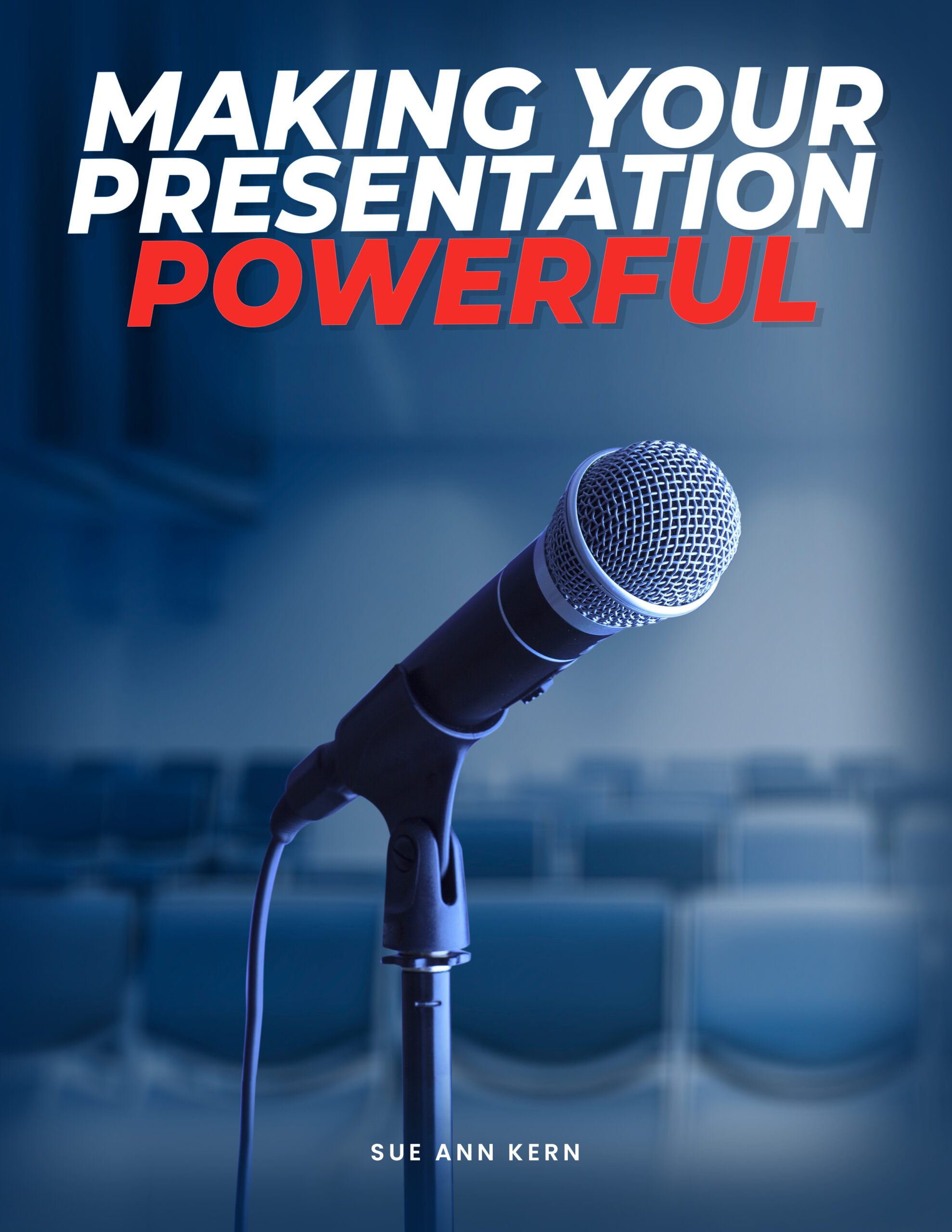 We are all familiar with the image of a television newscaster, sitting behind a desk, eyes surreptitiously moving back and forth as they read the teleprompter. As a public speaker, this is not you. Your job is not to read your presentation to your audience. When you are speaking in a professional setting, your job is to build a connection with your audience as you share your story and give them information that will transform their lives. This is difficult to do if you are reading your speech from a teleprompter, computer, or notes. If you audience does not feel an emotional connection, your power to inspire and persuade will be dimished.
We are all familiar with the image of a television newscaster, sitting behind a desk, eyes surreptitiously moving back and forth as they read the teleprompter. As a public speaker, this is not you. Your job is not to read your presentation to your audience. When you are speaking in a professional setting, your job is to build a connection with your audience as you share your story and give them information that will transform their lives. This is difficult to do if you are reading your speech from a teleprompter, computer, or notes. If you audience does not feel an emotional connection, your power to inspire and persuade will be dimished.
So does this mean that you can’t use notes when giving your speech? Not necessarily. There are times when notes are appropriate if they are written and used correctly.
The Downside of Using Notes:
- They force you to look down at your words instead of at your audience.
- They may make you seem less spontaneous and enthusiastic about your subject.
- They may make the audience think you aren’t prepared.
- They may give the impression that you aren’t in control of the knowledge; that you’re reading rather than speaking from the heart.
- It’s difficult to read and emote at the same time, so that affects and limits your ability to connect with your audience.
Giving a speech without notes sounds daunting. But ideally, when the time comes to present, you won’t need them. You will know what you want to say because you are the expert, you are passionate about the subject, and you will have practiced enough that you can present without needing to read from your notes.
Don’t fret – I wouldn’t recommend foregoing notes completely. They are very useful for keeping track of hard-to-remember details like dates, statistics, numbers, quotes, or names. When our nerves get the better of us (it happens to all of us, whether you want to admit it or not), having reference notes can help get ourselves back on track.
Remember, your goal is to build a connection. Focus on keeping your notes streamlined. What is the minimum amount of information that you need to keep yourself on track, undistracted, and interacting with your audience as much as possible?
Think of your notes as a setlist for a band: the notes simply say what songs are going to be played and in what order. The setlist is not the lyrics of the songs. They are a reference, not a script. Sometimes the audience makes a special request and the setlist is modified a bit.
Tips for Writing Notes Before Your Presentation:
- Focus on writing down the key points, words, and phrases rather than your entire speech. Utilize bullet points with key ideas instead of complete sentences. If someone can look at your notes and deliver a speech similar to yours, then there’s too much information.
- It’s OK to write your entire speech, but after you practice it, make your notes and store the written speech away. Be sure to practice with your notes, too.
- Make sure your notes are easily readable. Use a large, 16pt sans serif font like Arial, double spaced. Write your notes in the upper half of the page to enable you to keep your head up, and to avoid having to look far down your notes or losing your place.
- Let the formatting of your notes inspire and guide your presentation:
- Use different fonts for different speaking points.
- Use different colors for sections that you want to emphasize, or for different character’s lines.
- Use page breaks for different topics in your speech.
- Use italics to remind you to speak softly.
- Use BOLD to remind you to speak loudly.
- Leave spaces or ellipses to represent pauses.
- Different note formats can have benefits and drawbacks. It’s easy to lose your place if you are using a single sheet of paper with too much information written on it. Stacked index cards are distracting when you hold them, are cumbersome to shuffle through, and may get out of order. A computer or laptop can be frustrating if it goes into sleep mode or if you have to be continually clicking on it to move to your next page of notes. I find it most helpful to make notes the old fashioined way: with 8 1/2 x 11 paper. I type my notes in large font on only the top half of one side of the paper (not dobule sided.) When I need multiple sheets, I leave them unstapled. Then, I lay my notes flat on the lectern and slide each sheet to the left, one by one, as I reference it. This is less distracting than flipping pages.
- Choose a notes format you feel most comfortable with and practice with it!
Tips for Using Notes During Your Presentation:
- Don’t worry about memorizing your speech word-for-word; this may have the unintended effect of making you seem inauthentic or unnatural. You are more likely to lose your place and less likely to be flexible if you make a mistake. It’s better to know the “broad strokes” of the speech and how the parts connect rather than memorize each individual sentence. Focus on staying fluid, improvising, and knowing the subject of your speech well enough that you can deal with minor interruptions, hiccups, memory lapses, and distractions.
- During your speech, keep your notes on the lectern or table so you can easily reference them if needed. Don’t store them behind you or in a pocket or bag! If you must hold your notes, do not fling them around or fiddle with the paper.
- Don’t speak into your notes. When you need to reference them, look down, pause, then look up and start speaking. Pauses can be helpful – the audience probably won’t notice the pause, and may benefit from having a moment to digest the information you’ve given them. Pauses are also helpful for emphasis! Notice the spots in your speech where a pause would feel natural or impactful, such as when the audience pauses for laughter! Take advantage of these natural breakpoints to consult your notes.
- Memorize the beginning and end of your speech and any joke you intend to share! You have to be able to walk onto the podium, look your audience in the eye, and deliver an enticing opening to get their attention. Likewise, you have to leave them with a memorable and catchy call-to-action or inspirational message, and that is hard to pull off if you are reading from your notes.
Let’s conclude with an important reminder: your goal as a speaker is to build a connection with your audience. Use your notes as a guide, not as a guard rail. Practice, Practice, Practice. When you are well rehearsed, you are able to trust yourself to know your subject matter, respond to your audience, and improvise rather than memorize. You know your topic; you know your speech; stay loose and have some fun!
